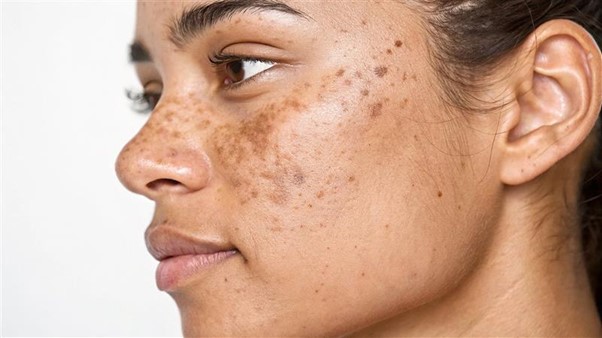What is Melasma?
Melasma is a common skin condition that causes brown or gray-brown patches on the face. Most often, these patches appear on the cheeks, forehead, nose, or upper lip. Many people notice melasma during their adult years. According to the American Academy of Dermatology, melasma affects millions of people worldwide, especially women. While it is not harmful, melasma can affect self-confidence. Because it is so common, understanding melasma is important for many people.
Common Symptoms of Melasma
Melasma symptoms are easy to spot. However, they can look like other skin problems. The most common signs include:Patches of darker skin, usually brown or gray-brownFlat, uneven spots on the facePatches often appear on both sides of the faceLess often, patches may show up on the neck or arms
Sometimes, melasma can be confused with freckles or age spots. But, melasma patches are usually larger and have clear edges.
Causes and Risk Factors
Although the exact cause of melasma is not fully known, several factors can trigger it. For example, sun exposure is a major cause. The sun’s rays make skin cells produce more pigment, which leads to dark patches. In addition, hormones play a big role. Many women notice melasma during pregnancy or while taking birth control pills. This is why melasma is sometimes called the “mask of pregnancy.” Other risk factors include:Having a family history of melasmaHaving darker skin typesUsing certain skin care products that irritate the skinTaking some medicines that make skin sensitive to sunlight
Because these factors can add up, some people are more likely to get melasma than others.
How Melasma is Diagnosed
Doctors usually diagnose melasma by looking at the skin. First, they will ask about your health history and any medicines you take. Sometimes, a doctor may use a special light called a Wood’s lamp. This helps them see how deep the pigment is in your skin. Rarely, a small skin sample (biopsy) may be needed to rule out other conditions. Most of the time, no special tests are needed.
Treatment Options for Melasma
Melasma treatment options depend on how severe the patches are. While melasma can fade on its own, especially after pregnancy, many people want faster results. Common treatments include:Topical creams with ingredients like hydroquinone, tretinoin, or corticosteroidsOther creams with azelaic acid or kojic acidChemical peels, which remove the top layer of skinLaser or light-based treatments, used carefully by skin specialists
However, not all treatments work for everyone. Sometimes, melasma can return, especially with sun exposure. Therefore, it is important to follow your doctor’s advice and protect your skin.
Lifestyle Tips and Prevention
Although melasma can be stubborn, you can take steps to help prevent it or stop it from getting worse. Try these tips:Always use sunscreen with SPF 30 or higher, even on cloudy daysWear wide-brimmed hats and seek shade when outdoorsAvoid tanning beds and direct sunlight during peak hoursUse gentle skin care products to avoid irritationIf you are pregnant or taking hormones, talk to your doctor about your risk
Because prevention is easier than treatment, these habits can make a big difference.
In summary, melasma is a common skin condition that can be managed with the right care. If you notice new or changing patches on your skin, consult our dermatologist at Asha Skin Clinic for personalized advice on managing melasma.

